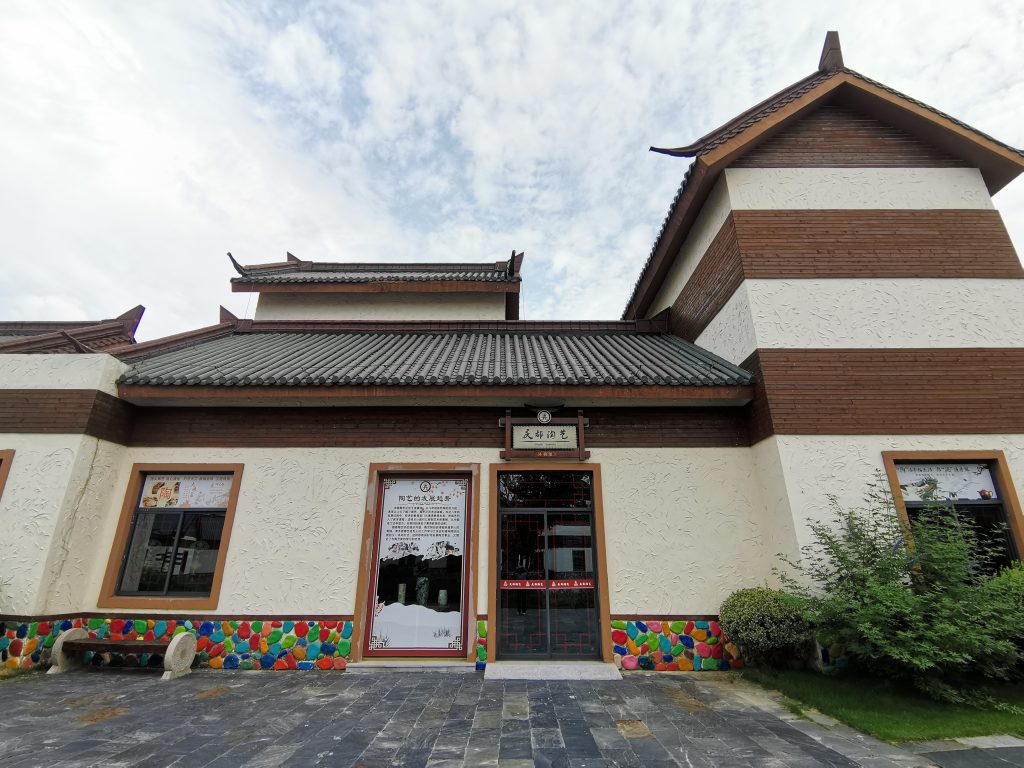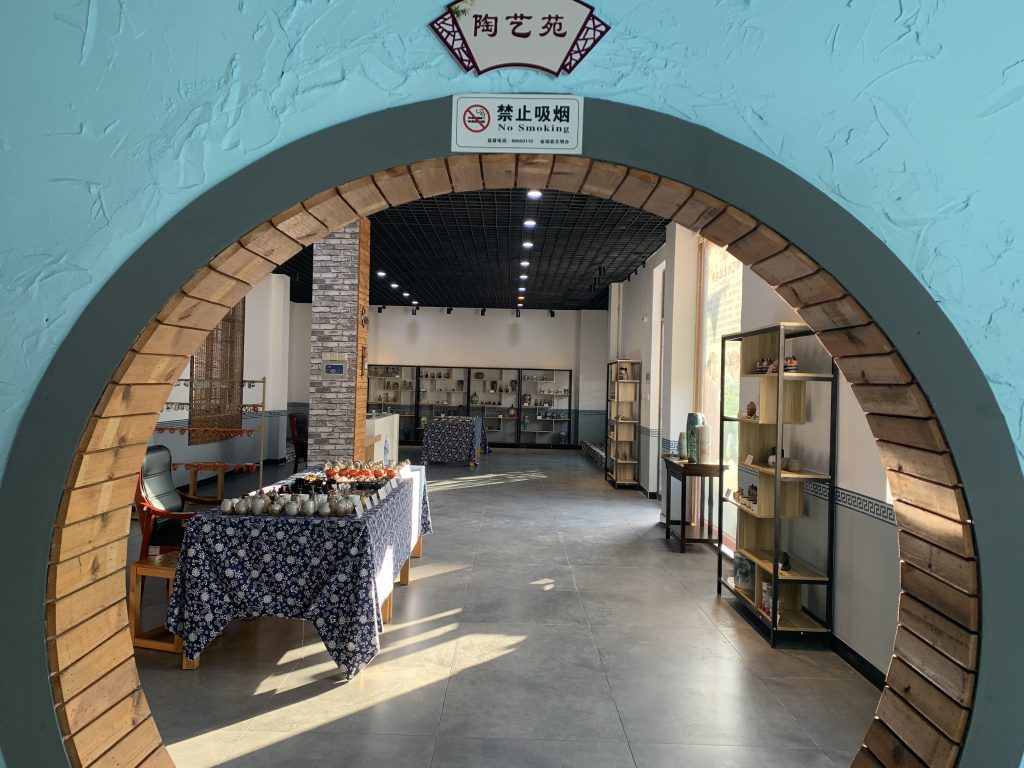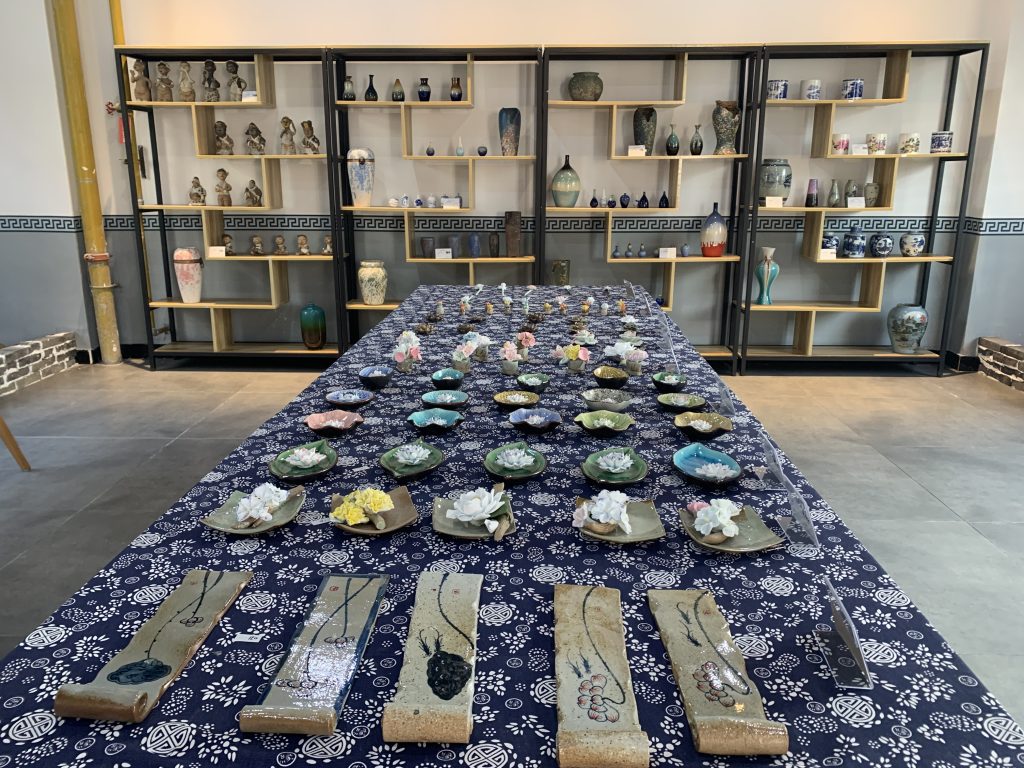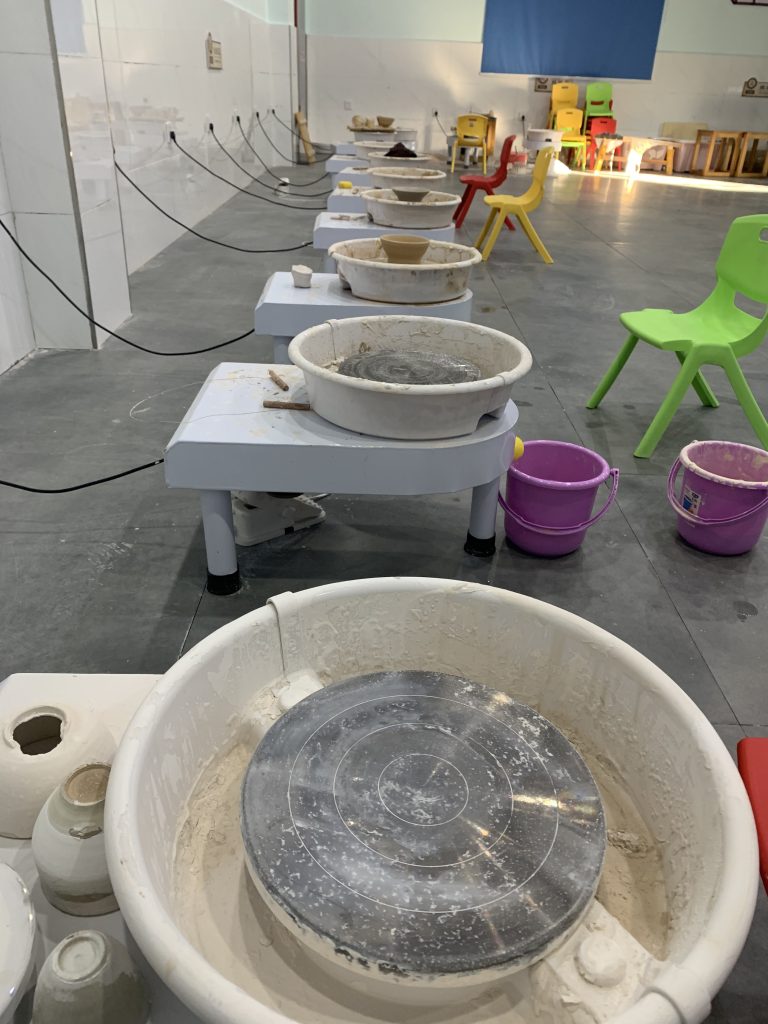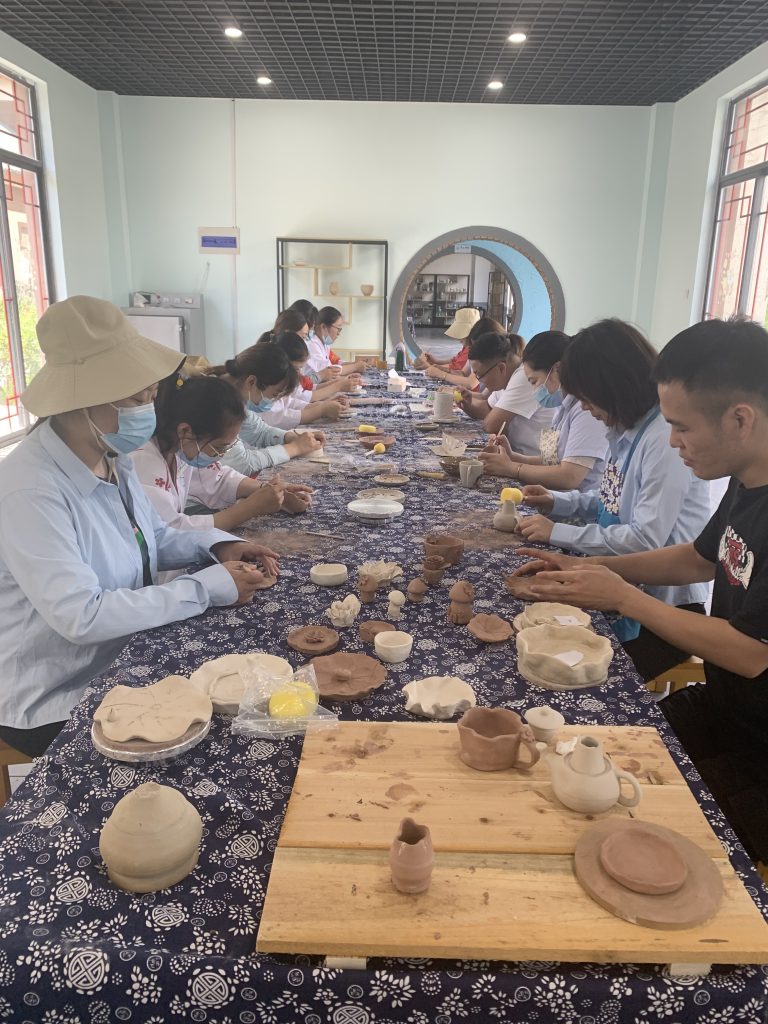According to records, the Huaiyi people living in the Sanhe Basin knew how to make pottery very early. After mixing clay with water, they repeatedly trampled, beat and kneaded to make mature mud, and then kneaded the cooked mud into the shape they needed by hand. , pots, altars and other utensils, as important living utensils.
Qingdu followed her mother to learn pottery when she was in her teens. She often saw her mother twisting threads, which inspired her. After many experiments, she invented the method of pulling the blank with a spinning wheel. With this invention, the pottery made is not only regular in shape and uniform in thickness, but also greatly improves the efficiency of pottery making. Later, after gradual practice, the manual turntable was improved to a pedal turntable, which made the pottery-making skill develop by leaps and bounds.
Qingdu also painted patterns and patterns on the pottery, as an artifact for tribal sacrifice, giving the pottery a sacred mission. The ancient drawing method is still praised and used by potters until modern times.
Qingdu Ceramics Museum has set up a series of areas such as mud kneading area, casting area, painting area, drying area, firing area, and sales area. Visitors can experience the process from kneading clay to firing pottery in a one-stop manner.
Recommended tour duration: 1 hour
